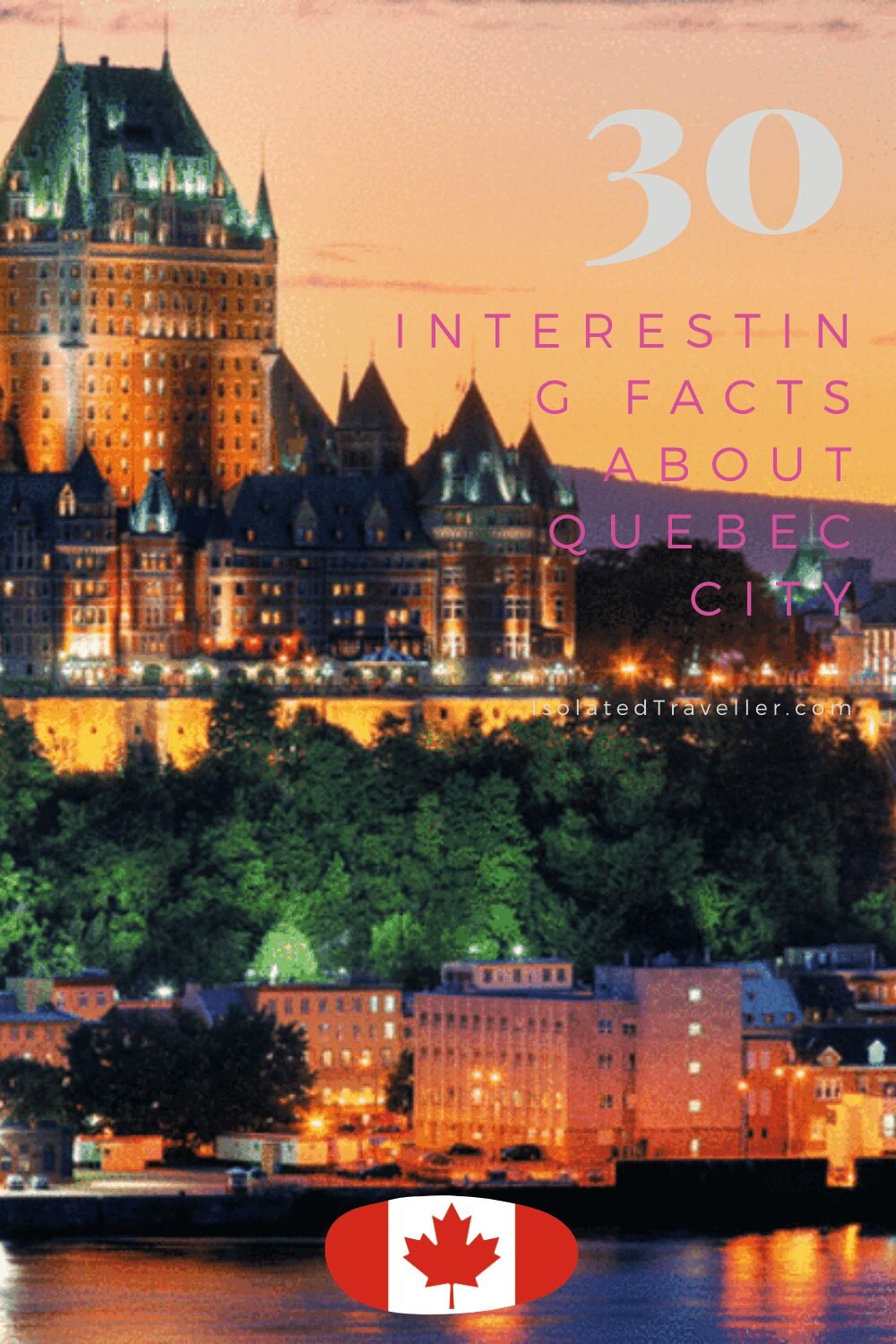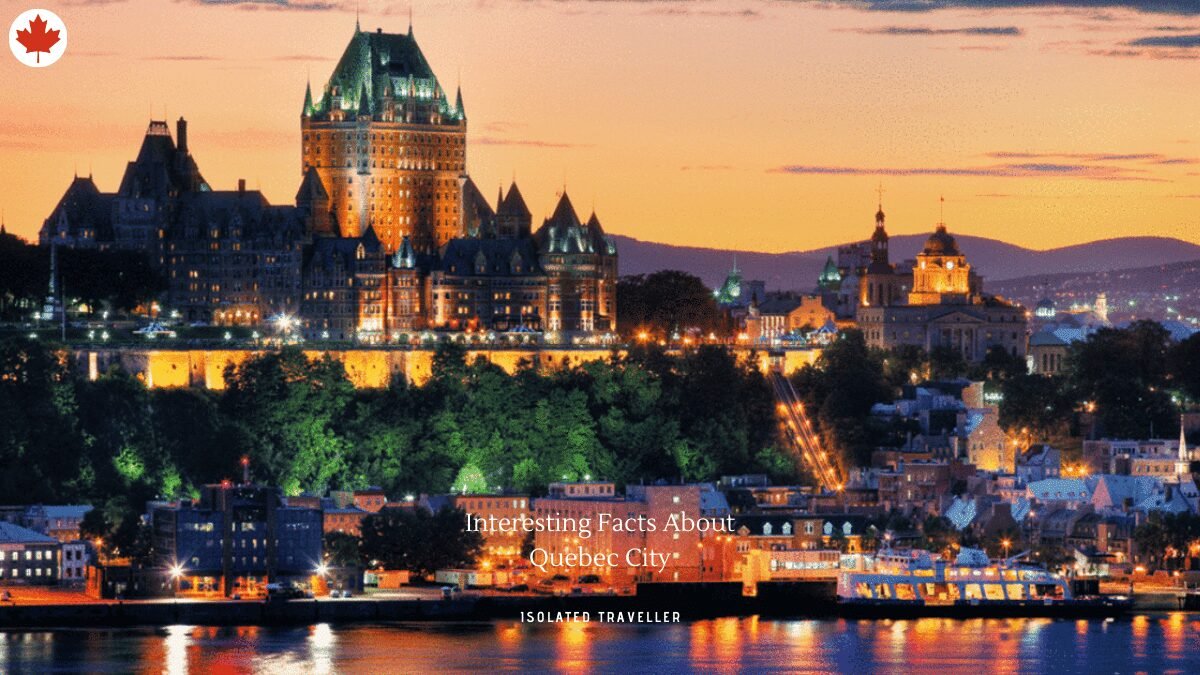Facts About Quebec City
-
Quebec City, officially Québec, is the capital city of the Canadian province of Quebec.
-
Quebec City is the eleventh-largest city and the seventh-largest metropolitan area in Canada.
-
Quebec was founded by Samuel de Champlain, a French explorer and diplomat, on 3 July 1608, and at the site of a long-abandoned St. Lawrence Iroquoian settlement called Stadacona.
-
Quebec City is the second-largest city in the province after Montreal.
-
Quebec City was struck by the 1925 Charlevoix–Kamouraska earthquake.
-
Since 1987 the avian emblem of Quebec has been the snowy owl.
-
Quebec City is home to Laval University, which is recognized as a UNESCO World Heritage Site.
-
The oldest part of Quebec City was declared a UNESCO World Heritage Site in 1985.
-
Quebec City is one of the oldest European cities in North America.
-
Quebec City is known for its Winter Carnival, its summer music festival and its Saint-Jean-Baptiste Day celebrations.
-
Québec City has a number of historic sites, art galleries and museums, including Citadelle of Quebec, Musée national des beaux-arts du Québec, Ursulines of Quebec, and Musée de la civilisa.
-
The Chateau Frontenac is the world’s most photographed hotel.
-
The first commercial brewery in Canada was started in Quebec City by Jean-Talon in 1668.
-
Quebec City has hosted a number of recent sporting events, as well as being shortlisted for the 2002 Winter Olympics city selection. The Special Olympics Canada National Winter Games was held in the city from 26 February to 1 March 2008.[66] Quebec City co-hosted with Halifax, Nova Scotia, the 2008 IIHF World Championship.
-
Quebec City’s 400th anniversary was celebrated in 2008, as of 2021 Quebec City is 413 years old.
-
Quebec City is twinned with Bordeaux, France & Calgary, Canada.
-
The floral emblem of Quebec is the Iris versicolor.
-
On average, Quebec City receives 1,190 millimetres of precipitation, of which 899 millimetres is rain and 303 millimetres is the melt from 316 centimetres of snowfall per annum.
-
Quebec is Canada’s largest province by area.
-
French is the official language of this province. Approximately 80 % of the residents speak French as their native language and close to 95% of “Quebecers” speak French.
-
Quebec City has served as a capital, From 1608 to 1627, and 1632 to 1763, it was the capital of French Canada and all of New France, from 1763 to 1791.
-
The Estimated Population of Quebeck is 542,298.
-
Quebec City has the oldest educational institution for women in North America, led by the Ursulines of Quebec, which is now a private elementary school.
-
Quebec City is located in the Saint Lawrence River valley, on the north bank of the Saint Lawrence River near its meeting with the St. Charles River.
-
The city’s name is Ville de Québec in French.
-
The city’s name comes from the word “Kebec,” which is actually an Algonquin word meaning “where the river narrows,” reflecting the fact that Quebec City sits at the narrow confluence of St. Lawrence and the St. Charles rivers.
-
The highest temperature ever recorded in Quebec City was 36.1 °C (97 °F) on 17 July 1953.
-
The coldest temperature ever recorded was −36.7 °C (−34 °F) on 10 January 1890 and 14 January 2015.
-
On 1 November 2009, the Quebec City re-organized its boroughs, reducing the number from 8 to 6: La Cité-Limoilou, Les Rivières, Sainte-Foy–Sillery–Cap-Rouge, Charlesbourg, Beauport & La Haute-Saint-Charles.
-
There are 37 National Historic Sites of Canada in Quebec City and its enclaves.


